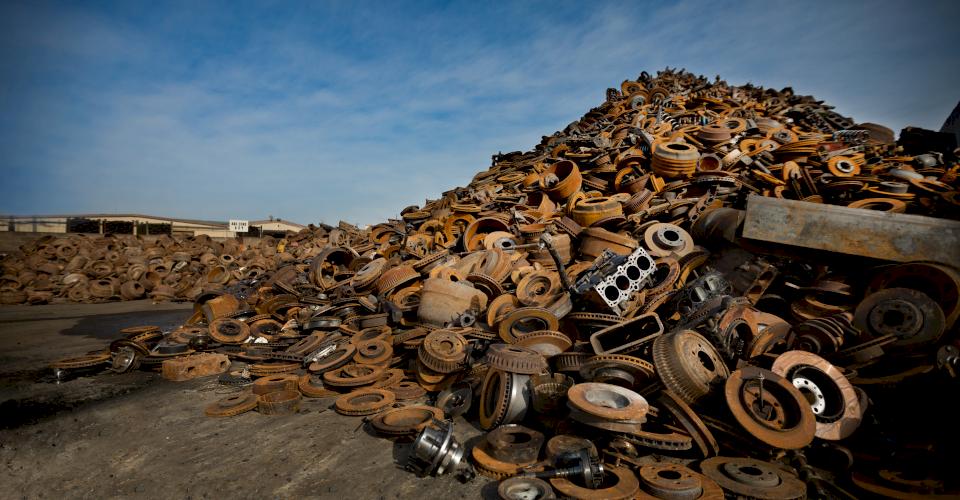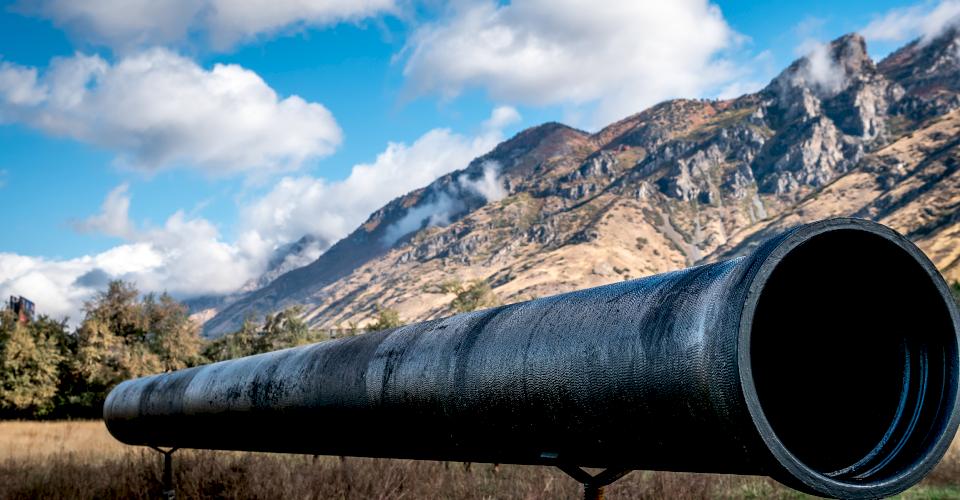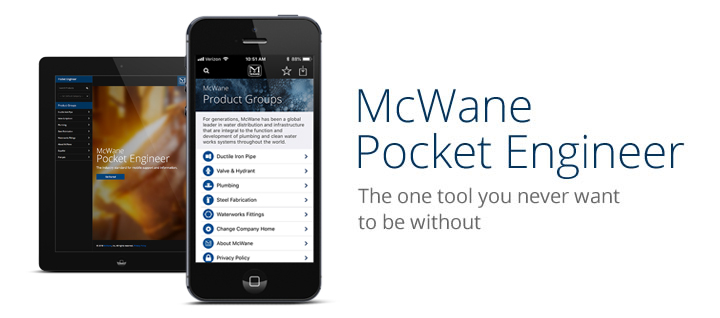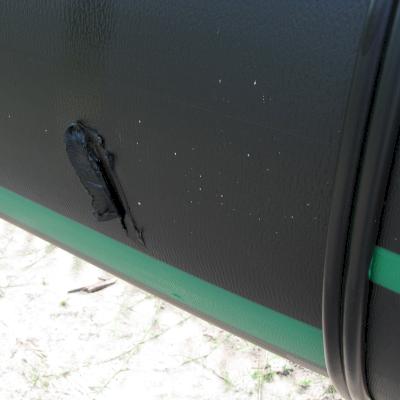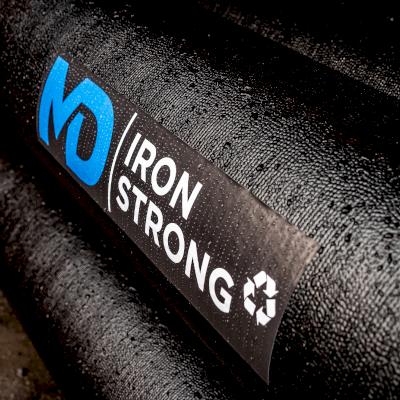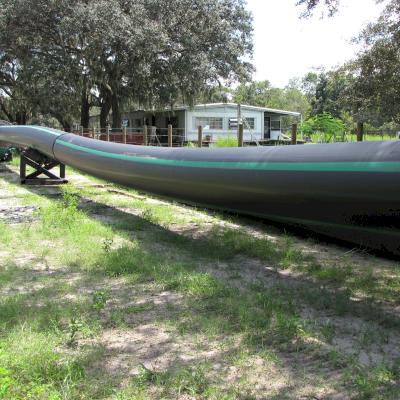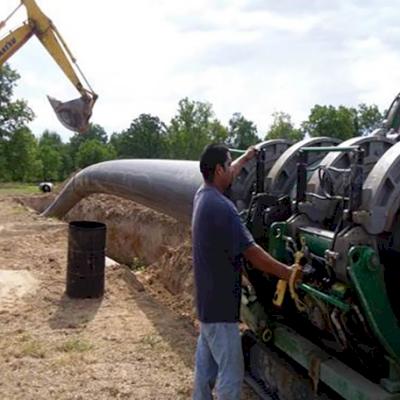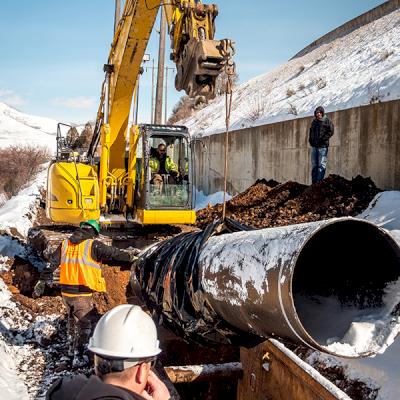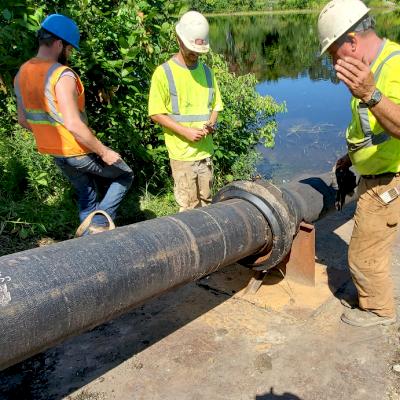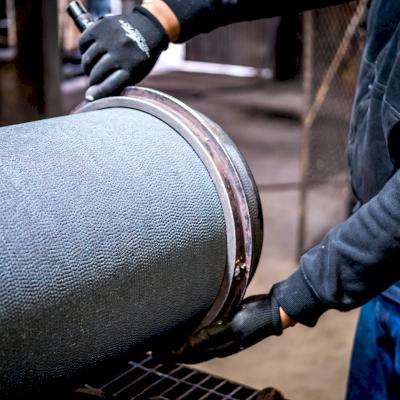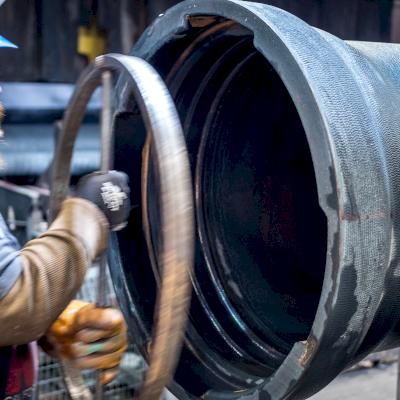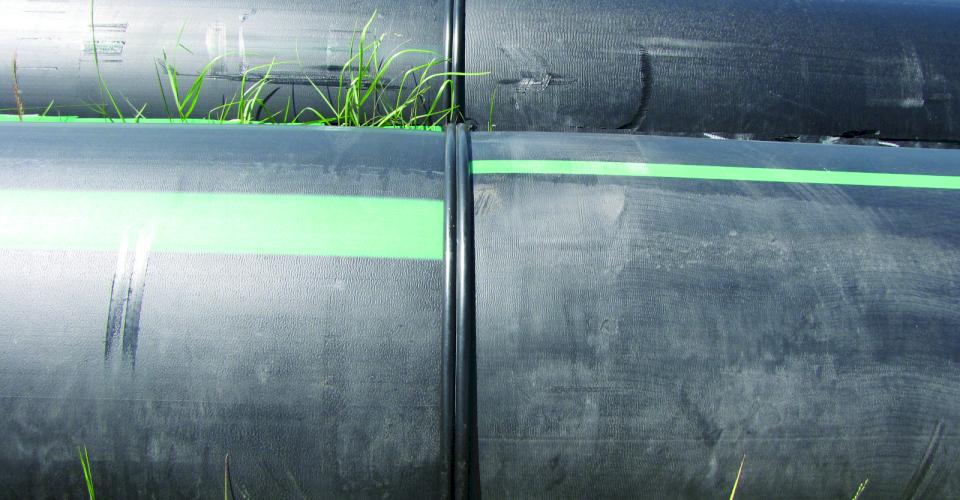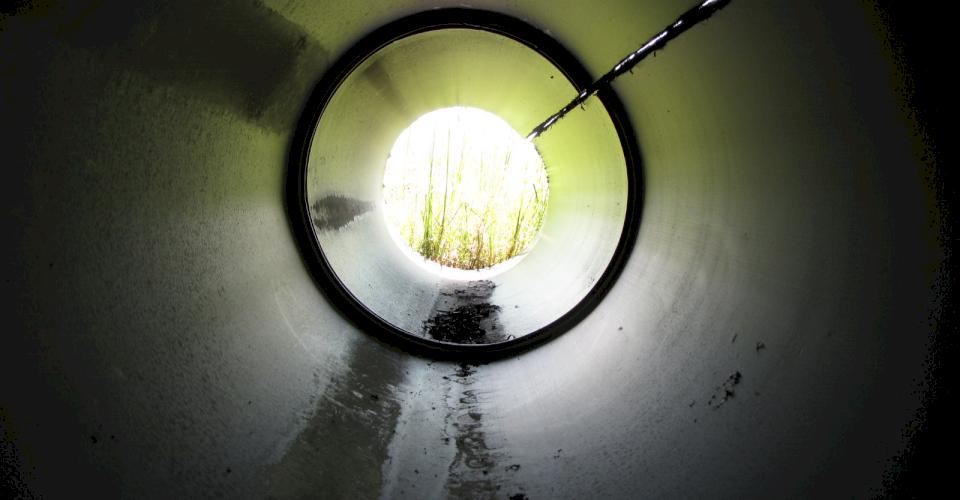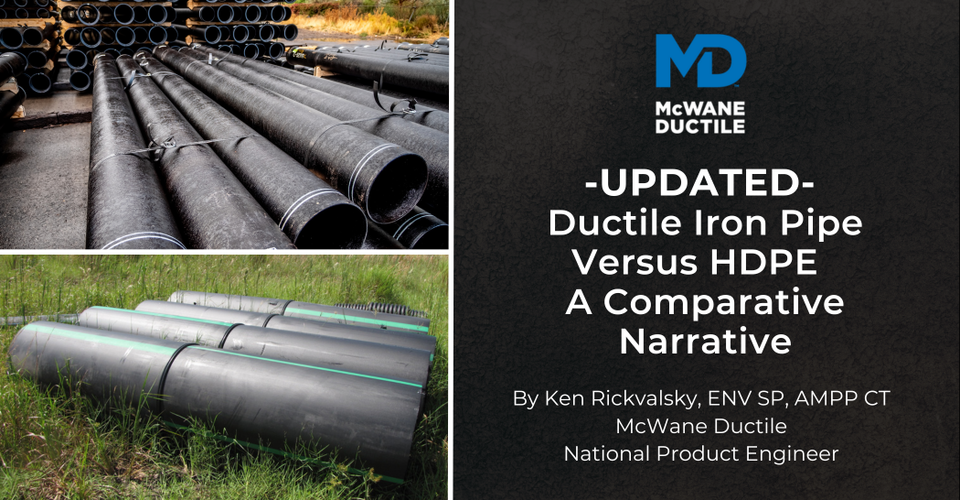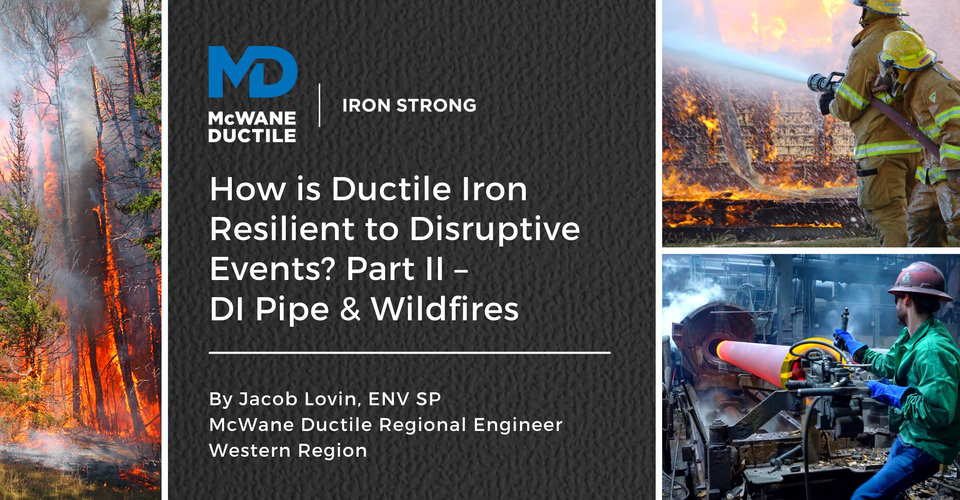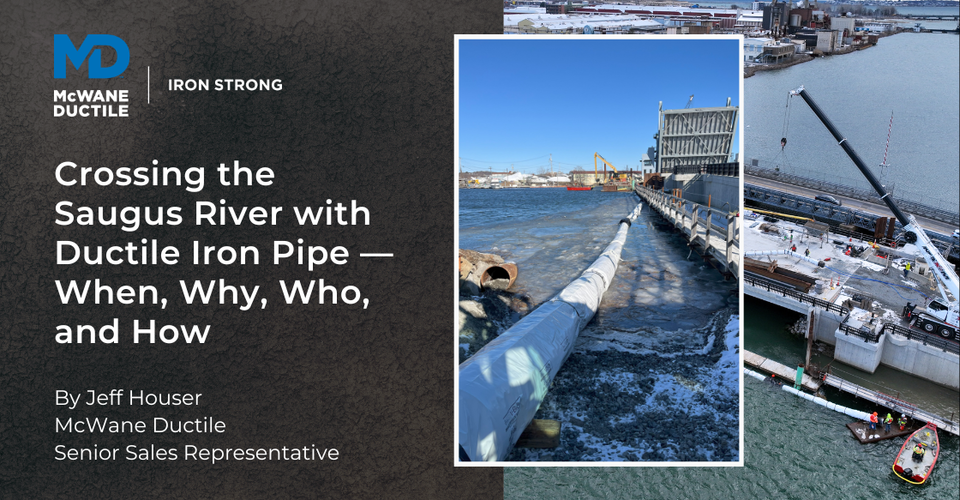High-Density Polyethylene (HDPE) is made from ethylene, which is derived from petroleum and natural gas. To form HDPE pipe, ethylene in pellet form is melted into a molding machine and then extruded into its finished pipe form. Little, if any, true recycling is involved with HDPE products manufactured for the water and sewer industry.
Conversely, Ductile iron pipe (DI pipe) is created from ferric scrap metal typically containing at least 90 percent recycled content. Primarily consisting of recycled automobiles, the renewable ingredient stream of DI pipe is at the core of its reliable status as a sustainable product safe for public health and the environment. In stark contrast, HDPE contains 0% recycled content.
HDPE Versus DI Pipe? It's In The Numbers
“254 … 99 … 11.4 … 13 … 73 degrees … 25 … Omaha! ... Omaha!” No, that’s not Peyton Manning barking out a pre-snap audible. Those are just some of the numbers that quickly distinguish the differences between HDPE and DI pipe. The hydrostatic design basis of DI pipe is 26 times greater than that of HDPE.
Where DI pipe has a yield strength of 42,000 psi in such regards, HDPE has a design limit of 1600 psi in material yield resistance, prior to safety factors being applied for either service allowance and casting tolerance in the pipe walls as produced.
It should be noted that HDPE design standards do not include or involve any surge allowance, even though measurable surges will occur every time transported fluids speed up or slow down within the pipes. It’s just a fact. Why bother with it?
Looking at an example of 12-inch pipe, DI pipe requires a mere 0.14 inch of metal wall to contain 900 psi internally. HDPE, if manufactured to a wall thickness of 0.14 inches, could resist only 34 psi internally. For HDPE to theoretically contain 900 psi, it would require a wall thickness of 3.7 inches, thereby reducing the inside diameter of a 12-inch HDPE to 5.8 inches.
In the interest of manufacturing consistency, the minimum pipe wall available for any DI pipe diameter is 0.25 inches, which affords DI pipe an actual internal pressure resistance of 1590 psi for a 12-inch pipe. HDPE at 0.25 inches for a 12-inch pipe would hold only 60 psi — that’s not even a fair fight.
A great place to delve even further into the numbers and differences between DI pipe and any other alternate material is McWane Ductile's pocket engineer found at https://pe.mcwane.com/. This is a great tool available for both desktop and mobile devices.
A Crushing Omission - External Loading
HDPE does not include external loading as a consideration in its design process and wall selection. In contrast, DI pipe thickness design for buried pipelines examines bending stress and barrel deflection as decision parameters, along with internal pressure values. The worst-case scenario of those three design approaches governs DI pipe wall selection.
For buried pipelines, external loading controls 99 percent of the design scenarios, which makes one wonder why HDPE would ignore such a prevalent aspect of actual service conditions.
Beyond these static loads of earth above the pipes, HDPE design also ignores the live-loading factors known to occur from vehicular traffic above buried pipelines. Standard AASHTO H-20 tractor-trailer wheel loads present a concentrated 16,000 pounds of downward force, with a 1.5 times impact factor involved (as an additional factor of safety in the design). These loads are incorporated directly into DI pipe wall thickness design, yet they are absent from HDPE design procedures.
Time and Temperature - Does It Matter?
Time and temperature are meaningless to DI pipe and fittings. Normal and proven service life of DI pipe exceeds 100 years. DI pipe is stable and unaffected in storage, installation, or operating temperatures from -10°F to 150°F with nary an adverse effect upon the pipe or its lining within that range.
However, the design basis of HDPE is considered at a fixed temperature of 73.4°F, with an expansion or contraction rate of 10 inches per 1000 feet of HDPE per 10 degree variance. This can, and has, created significant concerns in the field regarding pipe lengths remaining installed during otherwise normal operating or seasonal temperature variations. DI pipe is 13 times less affected by temperature change, at a rate of only 0.75 inches per 1000 feet of DIP per 10°F swing, which is easily absorbed into and within the rubber gasket joints of the pipeline.
Additionally, the hydrostatic design basis of HDPE is based upon a stress that would cause failure in just 100,000 hours of service, or 11.4 years. There are well-documented installations of grey iron, also called cast iron, that have served for over 300 years. It is important to remember that ductile iron is more resilient than grey iron.
Fit To Be Tied
Where ductile iron fittings are demonstrably the strongest portion of an already superior-in-strength DI pipeline, given their class 54 walls as a minimum per AWWA C153 standard, HDPE fittings are typically de-rated by 25 percent due to the presence of a mitered joint or seam, such as on bends and tees.
Following this rule, the aforementioned top-end of 254 psi pressure rating for certain HDPE pipes is fitting-reduced to 190 psi. Additionally, none of the current HDPE pipe manufacturers produce HDPE fittings, creating the added concern of quality control equivalency.
Connections to valves are generally limited to a flanged arrangement with HDPE pipe. Clearly, flanges are not ideal for direct-bury conditions due to shear and other loading concerns, which are ignored by HDPE design methods, as previously discussed.
Constructability Of The Pipeline
Where DI pipe uses an easy-to-assemble/disassemble push-on rubber gasket joint, HDPE joints are butt-fusion welded (carefully melted) together. This requires special machinery and training, along with nearly perfect weather conditions to accomplish without tenting or other jointing protection involved.
Most contractors will sub-contract third parties, at significant cost, in order to perform the above-ground HDPE jointing. With nominal 40-foot pipe lengths typical for HDPE, one must safely maintain open trench sections of greater than 80 feet at a time for installation to progress.
This is not easy or even plausible in many locations where underground utility construction tends to occur. All of this must happen without scratching or dinging the outside surface of the HDPE, which would reduce its pressure rating or disqualify the pipe from use, if the damage exceeds 10 percent of the original pipe wall thickness. None of these concerns exist with easy-to-handle and durable DI pipe.
Gas Guzzlers - Total Cost Equation
Once you’ve acquired the car, you must fuel it to use it. The same consideration can, and should be, given to pressurized utility pipes. While sticker-price may draw you in, operating costs can run you dry if you’re not aware or respectful of them.
Considering the relative difference in pipe wall thicknesses, DI pipe has the largest inside diameters (where the flow happens) amongst Ductile iron, HDPE and PVC pipes. Using 12-inch pipe as an example, the present worth of excess energy costs to pump the same volume of water through each mile of HDPE pipe (versus 12-inch DIP) in just the first 25 years of operation computes to well over $900,000.
Therefore, unless the HDPE pipe can be purchased and installed for $175 less per foot than DI pipe, you’re losing money. This is just one variable in the overall life-cycle cost of alternate materials such as HDPE or PVC, yet alone is more than enough to reconsider straying from the reliable and efficient use of DI pipe, despite potential initial purchase cost differences
One Last Thing
DI pipe employs rubber gasket radial compression joints to affect a high-pressure watertight seal. Unfortunately, these are often mistakenly criticized as sloppy or havens for sediment gathering, especially in sewer system pipelines.
Let’s set the record straight — the minor gaps that can exist in the interior bell-spigot connection of deflected DI pipe joints, if anything, do fill with the silt and sediments of sanitary sewer flow, yet not to the point of building beyond the barrel wall itself. There is no beaver damming going on; this will not lead to compromised flow or tangling of other debris at these points. Such minor gaps quickly become insignificant and remain as such for the entire service life of the pipe under normal operating conditions.
Although largely, and surprisingly, ignored in HDPE pipe considerations and operations, the nature of the joints in HDPE pipes of all diameters screams for the attention that DI pipe mistakenly receives. The butt-fusion method of fashioning an HDPE pipe joint leaves residual lips that are of considerable measure on both the inside and outside surfaces of the joint.
In some pipe diameters, these protrusions can exceed one-inch in height. In most HDPE diameters, these lips around the pipe circumference settle and stay between a half-inch and three-fourths-inch in height. That clearly is an impediment to smooth flow in water and a dam in the making, if toilet paper or other solids enter the picture.
Summary - Chosing The Right Material
When choosing an appropriate utility piping material, there is so much more to consider than just the purchase price alone. Hopefully this comparison of two popular piping materials has demonstrated the need for more than just a cursory review or habitual choice.
At McWane Ductile, we are always available to run through the matrix with you, free of charge. Some installation or use conditions do favor alternate materials, yet it’s hardly ever a cut-and-dried deal.
Standard DI pipe may not always be the right choice for every job, yet DI pipe, properly designed and installed, is rarely unsuitable for a water or wastewater project. So, when it comes to constructing or rehabilitating your utility systems, make the SMaRT© choice with DI pipe.
Need Assistance With Your Water Infrastructure Project?
McWane Ductile offers multiple services for our customers extending far beyond manufacturing ductile iron pipe. From design to installation, we take great pride in providing education and assistance to water professionals throughout the water and waste water industry.
Check out all our digital offerings:


